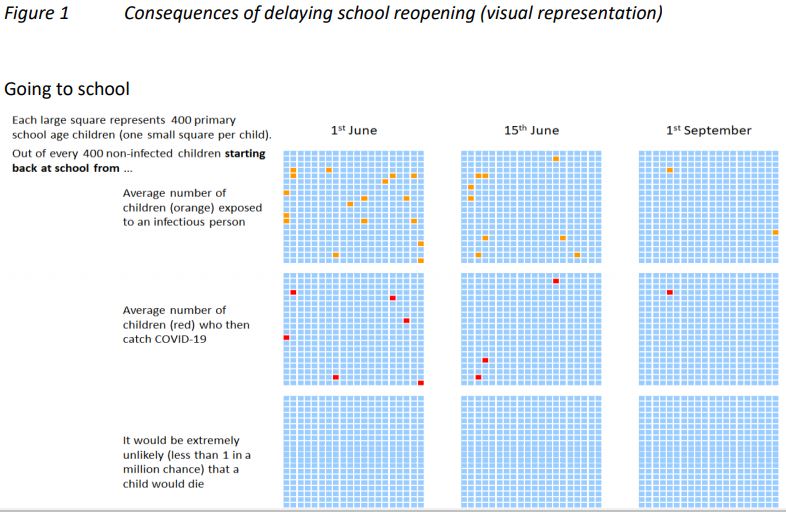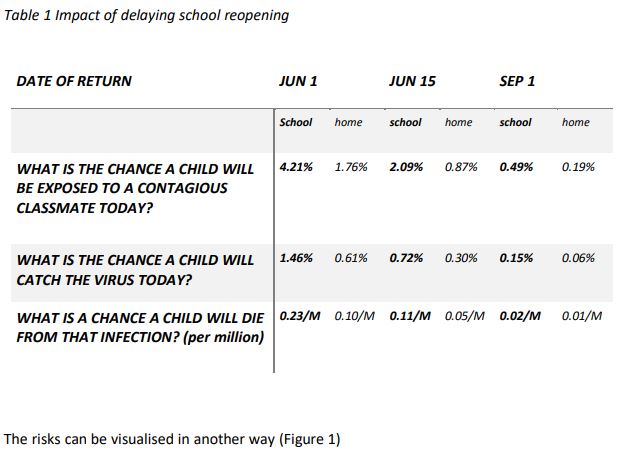Delay to School re-opening
Dear Parents/Carers
On previous posts and the video published on our website we gave potential return dates of 3rd June for Year 6 and 16th June for Year 1. It was noted that these plans were provisional and subject to change in accordance with health and safety guidance.
Towards the end of last week we became aware of ‘The Independent SAGE Report 3 – When Should a School Reopen?’ (Please see http://www.independentsage.org/wp-content/uploads/2020/05/Independent-Sage-Brief-Report-on-Schools-5.pdf if you wish to read the full report and the key points that have been considered are listed below). Sage are the independent advisory body that the government use to inform their decisions and their report suggests that delaying the re-opening of school from the 1st June to the 15th June could halve the risk of contracting and transmitting Covid-19. After reading the document in detail then discussing it with the senior leadership team of the school and the governing body, we have made the very difficult decision to delay the re-opening of school to Monday 15th June, in order to protect all stakeholders. This would mean that Year 6 only would return on 15th June at the earliest and Year 1 would follow later at a date to be agreed. Further details will be published nearer the time as to the new timetabling. Once again, this date is provisional as the situation and the guidance is subject to change.
We apologise for any inconvenience this decision may cause but we hope you understand that it has been taken with the best interests of children and staff in mind. The health and safety of all stakeholders remains our top priority.
The following exerts are from:
The Independent Scientific Advisory Group for Emergencies (SAGE)
The Independent SAGE Report 3 – When Should a School Reopen? Final Report – May 28, 2020

(Page 8)

(Page 7)
‘Delaying a school reopening by two weeks (to 15th June) approximately halves the risk that a child will be infected and delaying the reopening till September is less risky still.’ (Page 6)
‘We note that SAGE modelled the potential impact on the Reproduction Rate, R, of 7 “returning to school” scenarios, where the 7 scenarios were provided by the Department for Education. All of the scenarios resulted in an increase in R and the scale of increase was highly dependent on current R and on the wider context within each community, in particular adherence to social distancing. SAGE warned that if current R is just below 1, then even small changes could trigger a return to exponential growth.’ (Page 3)
‘We believe that decisions on school opening should be guided by evidence that there are low levels of COVID-19 infections in the local community in which the school is situated and the ability to rapidly respond to new infections through a well-functioning, coordinated, local test, track and isolate strategy. We have seen no compelling evidence that these conditions have so far been met across the country. Until they are, it is not safe to open schools everywhere on June 1.’ (Page 5)
‘Current UK data suggest that they are as likely as adults to become infected and carry the virus but they may be less likely than adults to transmit the virus because, for instance, adults are contagious for longer than children(Office for National Statistics, 2020). However, the impact of placing many children in one place could lead schools to become “institutional amplifiers”, if asymptomatic children go unnoticed until an adult becomes symptomatic.’ (Page 5)
‘Even if there are very few new infections within schools, the situation could still create risk for some adults who come into contact with infected children – noting that a significant number of infected children will be asymptomatic.’ (Page 9)
‘There has been a serious deterioration in pupil-teacher ratios in the past ten years. Class sizes are now substantially higher in England compared with other European countries:
• 27.9 pupils compared with the European average of 20.1 in primary schools
• 24.3 pupils compared with the European average of 20.9 in secondary (11-16).
Over a million primary and secondary pupils (13%) in England are in classes over 30. It is therefore easier for Danish or German schools to reduce class size to around 10 pupils (halving a class) than England (splitting a class into thirds. Even just through halving to reduce classes to 15, the Department for Education is expecting classroom assistants to take charge, though in a different room from the qualified teacher.’ (Page 11)
‘Independent SAGE believes that decisions to reopen schools must be made on a case by case basis and in partnership with local communities.’ (Page 3)



